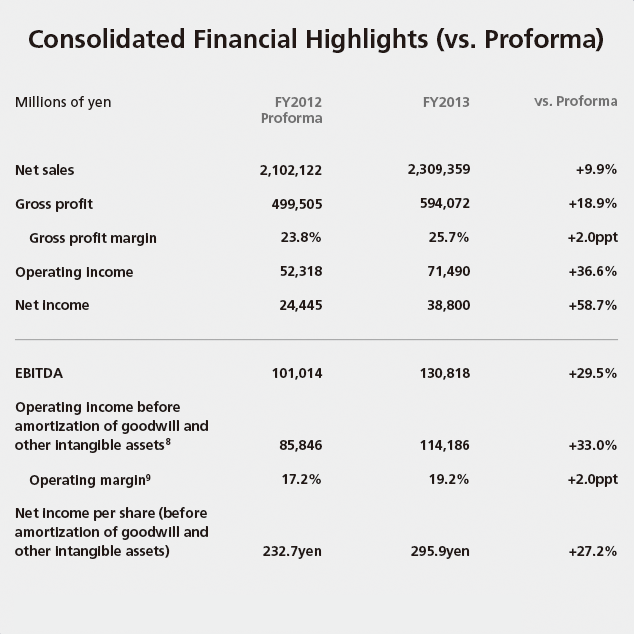Goodwill vs Other Intangible Assets Whats the Difference
Post on: 14 Май, 2015 No Comment

30 Summary of significant differences between US GAAP and IFRS
(i ) Goodwill Under both IFRS and US GAAP, goodwill is not subject to amortisation, but is tested at least annually for impairment. As permitted by IFRS 1, the Groups goodwill under IFRS has been frozen at the amount recorded under UK GAAP as at 1 January 2004. Under US GAAP, following the provisions of SFAS 142, Goodwill and other intangible assets, the carrying value of goodwill was frozen at the amount recorded under previous US GAAP as at 1 January 2002. Under both previous US GAAP and UK GAAP, goodwill was amortised over its useful economic life. Thus, while ongoing accounting policies in respect of goodwill are similar under US GAAP and IFRS, the difference in the dates of transition means that different amounts of goodwill are recorded.
Under US GAAP, certain costs to be incurred on restructuring on business combination are treated as a fair value adjustment in the balance sheet acquired. Under IFRS, these costs are expensed post-acquisition. Additionally, under US GAAP, tax benefits arising from the exercise of options issued as part of the consideration for a business combination become a deduction to goodwill, only to the extent that those benefits do not exceed the fair value of the consideration relating to those options at the appropriate tax rate. Any excess tax benefits are a deduction to equity. Under IFRS, the full tax benefit is a deduction to equity.
Where provisional assessments of the fair values of assets and liabilities acquired on acquisition are refined, adjustments to fair values are recorded as prior year adjustments to goodwill under IFRS. Under US GAAP, such revisions are recorded as amendments to goodwill in the subsequent year.
(ii ) Recognition and amortisation of intangibles The Group has taken advantage of the exemption under IFRS 1 not to apply IFRS retrospectively to business combinations occurring before 1 January 2004. This means that for business combinations occurring before this date, the previously reported UK GAAP treatment has continued to be followed. Under previous UK GAAP, intangible assets were recognised separately from goodwill only where they could be sold separately without disposing of a business of the entity. This separability criterion does not apply under either IFRS or US GAAP. Thus, a number of intangible assets which are required to be recognised separately from goodwill under both IFRS 3 and SFAS 142 were subsumed within goodwill under UK GAAP. Under both US GAAP and IFRS, such intangible assets are amortised over their useful economic lives. Except in relation to in-process research and development (see below), there is no difference in accounting policy for intangible assets recognised as a result of business combinations entered into after 1 January 2004.
(iii ) In-process research and development Under IFRS, in-process research and development projects purchased as part of a business combination may meet the criteria set out in IAS 38, Intangible assets, for recognition as intangible assets other than goodwill and are amortised over their useful economic lives commencing when the asset is brought into use. Under US GAAP, in-process research and development is immediately written-off to the income statement. This accounting policy difference gives rise to an associated difference in deferred tax.
(iv ) Valuation of consideration on business combination Under both IFRS and US GAAP, the fair value of consideration in a business combination includes the fair value of both equity issued and any share options granted as part of that combination. Under IFRS, any equity issued is valued at the fair value as of the date of completion, whilst under US GAAP, the equity is valued at the date the terms of the combination were agreed to and announced. For options, under US GAAP, the fair value is based upon the total number of options granted, both vested and unvested, whilst under IFRS the fair value only includes those that have vested, together with a pro-rata value for partially vested options. Furthermore, where there is contingent consideration for an acquisition, under IFRS this is recognised as part of the purchase consideration if the contingent conditions are expected to be satisfied, whilst under US GAAP it is only recognised if the conditions have actually been met, other than to the extent necessary to eliminate any potential negative goodwill under US GAAP.
(v ) Deferred compensation Under US GAAP, the intrinsic value of unvested share options issued by an acquirer as part of a business combination in exchange for unvested share options of the acquiree is recorded as a debit balance within shareholders funds. This amount is charged to the income statement over the vesting period of the share options in accordance with FIN 28. Under IFRS, no such adjustment to shareholders funds is made on acquisition. Following the adoption of FAS No. 123 (revised 2004) (FAS 123(R)), Share-based payment, the unamortised balance has been transferred to additional paid-in capital.
(vi ) Compensation charge in respect of share-based payments The Company issues equity-settled share-based payments to certain employees. In accordance with IFRS 2, equity-settled share-based payments are measured at fair value at the date of grant, using the Black-Scholes pricing model. The fair value, determined at the grant date of the equity-settled share-based payments, is expensed on a straight-line basis over the vesting period, based on the Companys estimate of the number of shares that will eventually vest.
Under US GAAP, the Company also expenses share-based payments, including employee stock-options, based on their fair value in accordance with FAS 123(R). Some awards made by the Company are liability-classified awards under FAS 123(R) as either: (i ) there is an obligation to settle a fixed monetary amount in a variable number of shares; or (ii ) the award is indexed to a factor other than performance, market or service condition. The fair value of these awards is remeasured at each period end until the award has vested. Once the award has vested, or for (i ) above when number of shares becomes fixed, the award becomes equity-classified.
(vii ) Deferred tax on UK and US share options In the US and the UK, the Group is entitled to a tax deduction for the amount treated as employee compensation under US and UK tax rules on exercise of certain employee share options. The compensation is equivalent to the difference between the option exercise price and the fair market value of the shares at the date of exercise.
Under IFRS, deferred tax assets are recognised and are calculated by comparing the estimated amount of tax deduction to be obtained in the future (based on the Companys share price at the balance sheet date) with the cumulative amount of the compensation expense recorded in the income statement. If the amount of estimated future tax deduction exceeds the cumulative amount of the remuneration expense at the statutory tax rate, the excess is recorded directly in equity, against the profit and loss reserve. In accordance with the transitional provisions of IFRS 2, no compensation charge is recorded in respect of options granted before 7 November 2002 or in respect of those options which have been exercised or have lapsed before 31 December 2004. Nevertheless, tax deductions have arisen and will continue to arise on these options. The tax effects arising in relation to these options are recorded directly in equity, against retained earnings.
Under US GAAP, deferred tax assets are recognised by multiplying the compensation expense recorded by the prevailing tax rate in the relevant tax jurisdiction. Where, on exercise of the relevant option, the tax benefit obtained exceeds the deferred tax asset in relation to the relevant options, the excess is recorded in additional paid-in capital. Where the tax benefit is less than the deferred tax asset, the write-down of the deferred tax asset is recorded against additional paid-in capital to the extent of previous excess tax benefits recorded in this account, with any remainder recorded in the income statement.

(viii ) Employer taxes on share-based remuneration Under IFRS, employers taxes that are payable on the exercise or vesting of share-based remuneration are provided for over the vesting period of the related option or award. Under US GAAP, such taxes are accounted for when the option or award is exercised or vests respectively.
(ix ) Accrued legal costs Under IFRS, future legal fees that the Group is expecting to incur on current cases are accrued when the obligating event giving rise to the legal costs has occurred. Under US GAAP, such costs are charged to the income statement in the period in which the costs are incurred.
(x ) Sabbatical leave The Company has adopted EITF 06-2 from 1 January 2007 in accounting for its provisions for employee sabbatical leave. To harmonise the accounting treatment under both GAAPs, the Company has also provided for sabbatical leave under IFRS. EITF 06-2 requires the opening provision at the beginning of the year to be charged directly to reserves, whilst under IFRS, the prior year results have been restated.
(xi ) FIN 48 adoption On 1 January 2007, the Company adopted FIN 48, Accounting for Uncertainty in Income Taxes. Under US GAAP, the cumulative effect of the change was a credit of £838,000 to retained earnings.
(xii ) Available-for-sale investment impairment Accounting for impairments to available-for-sale investments is similar under both US GAAP and IFRS. However, an investment which was deemed to have suffered an other-than-temporary impairment in a prior period under US GAAP (with a corresponding charge being recognised in the income statement) was accounted for as a temporary impairment under IFRS (with the corresponding charge being recognised directly in reserves). In 2007, a further other-than-temporary impairment was made under both GAAPs with the result that the cumulative other-than-temporary impairments are now equal. Consequently a greater charge was made through the current year IFRS income statement, as the current year charge under IFRS includes the amount previously deemed to be temporary under IFRS but other-than-temporary under US GAAP.














